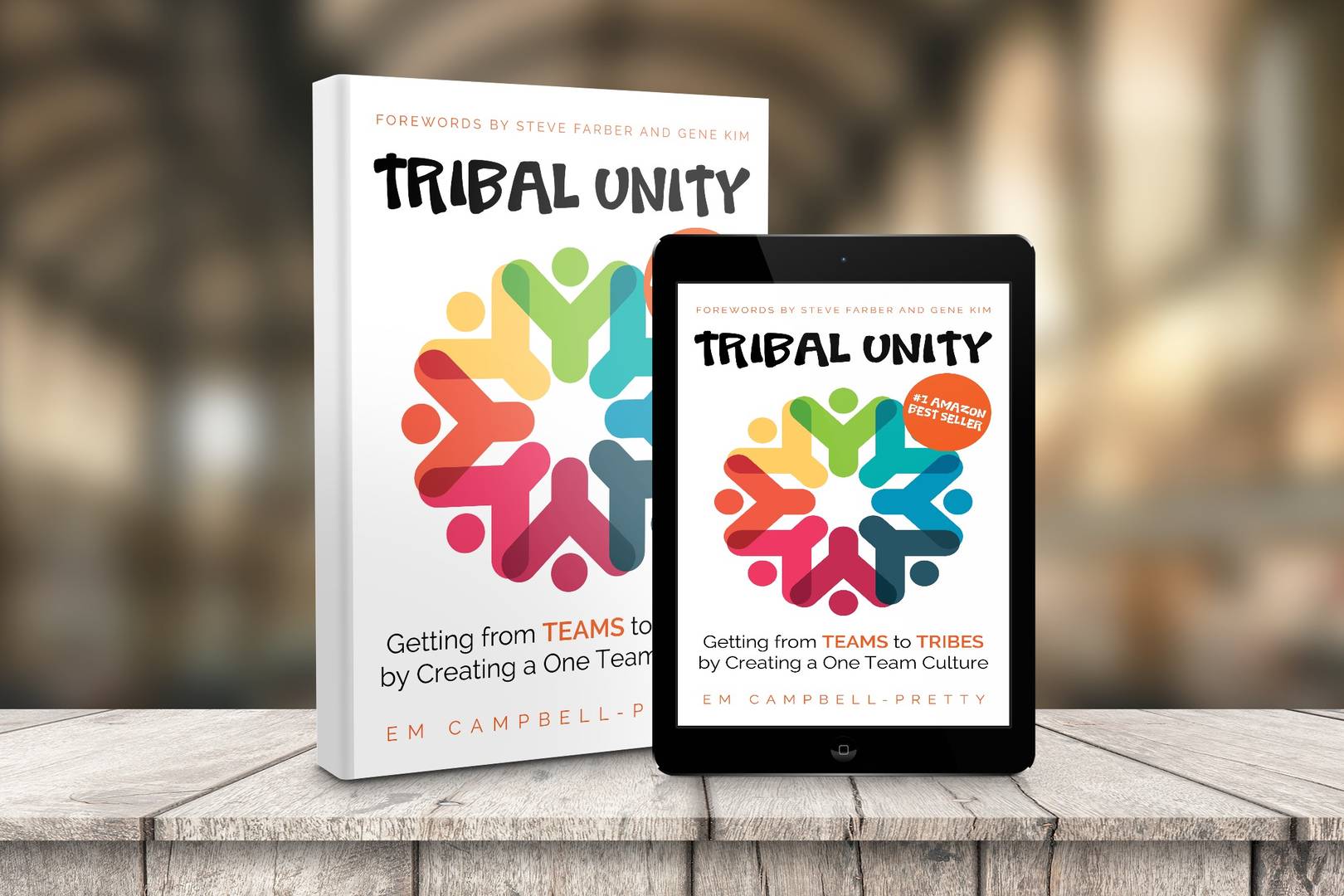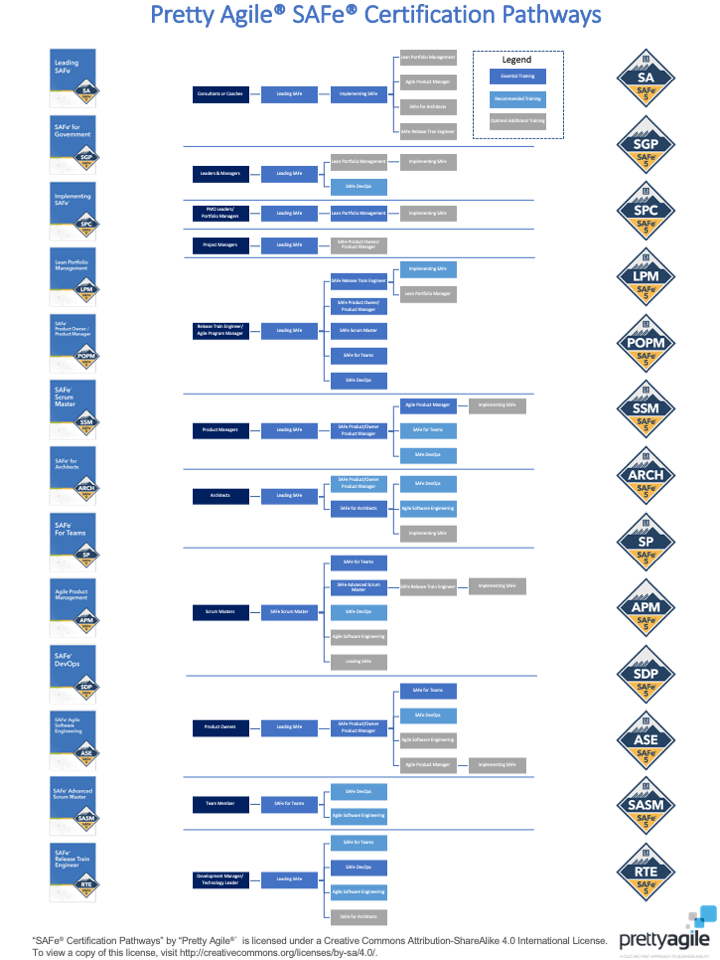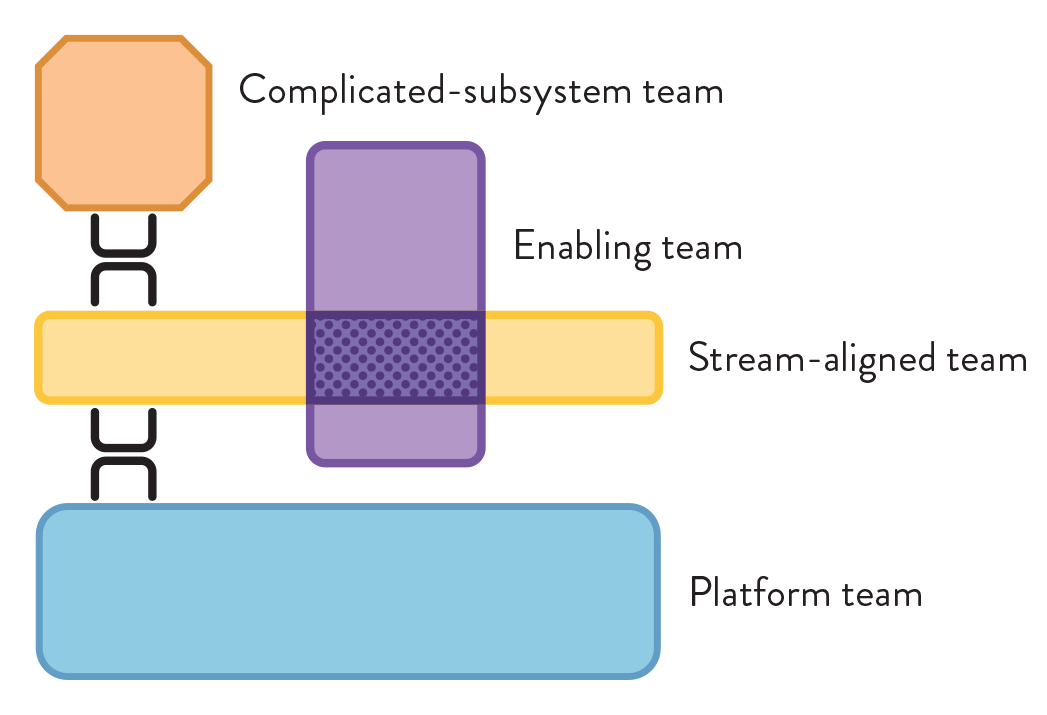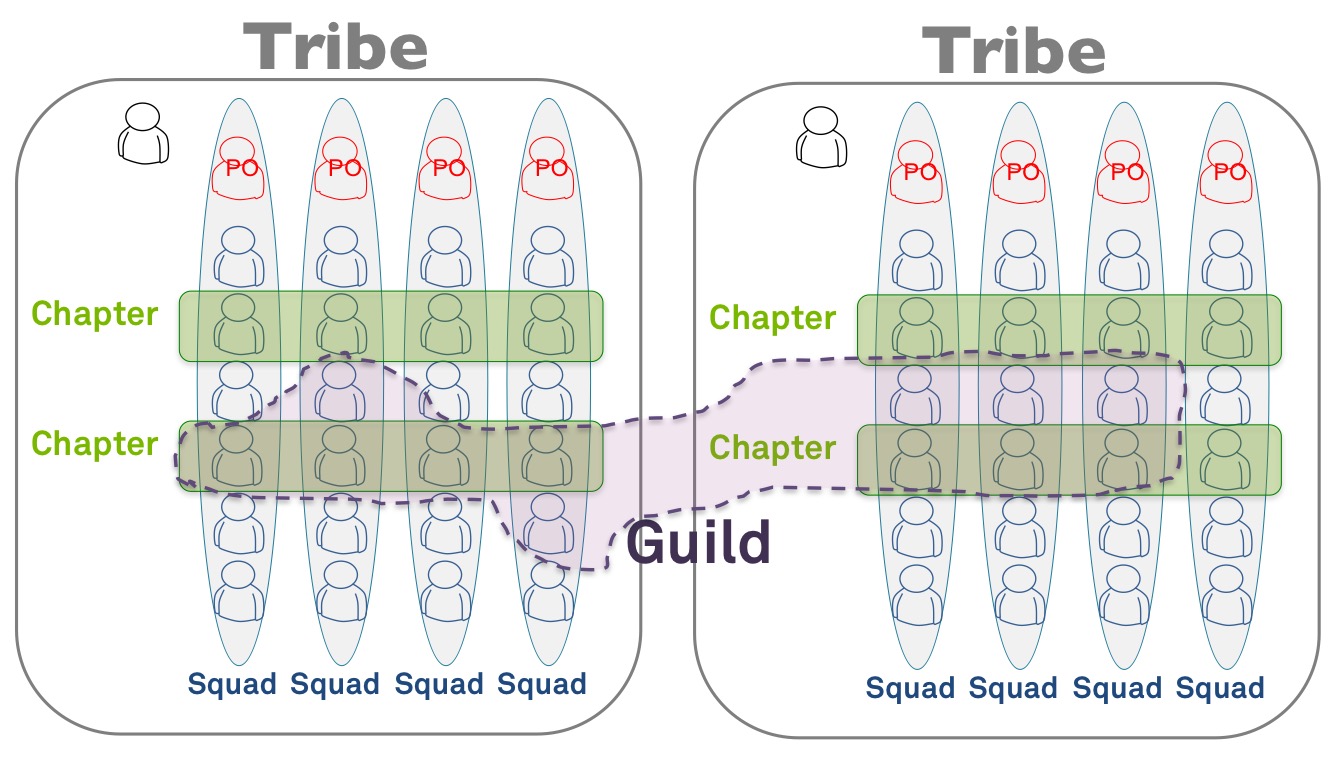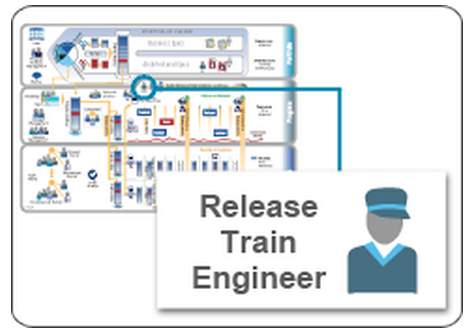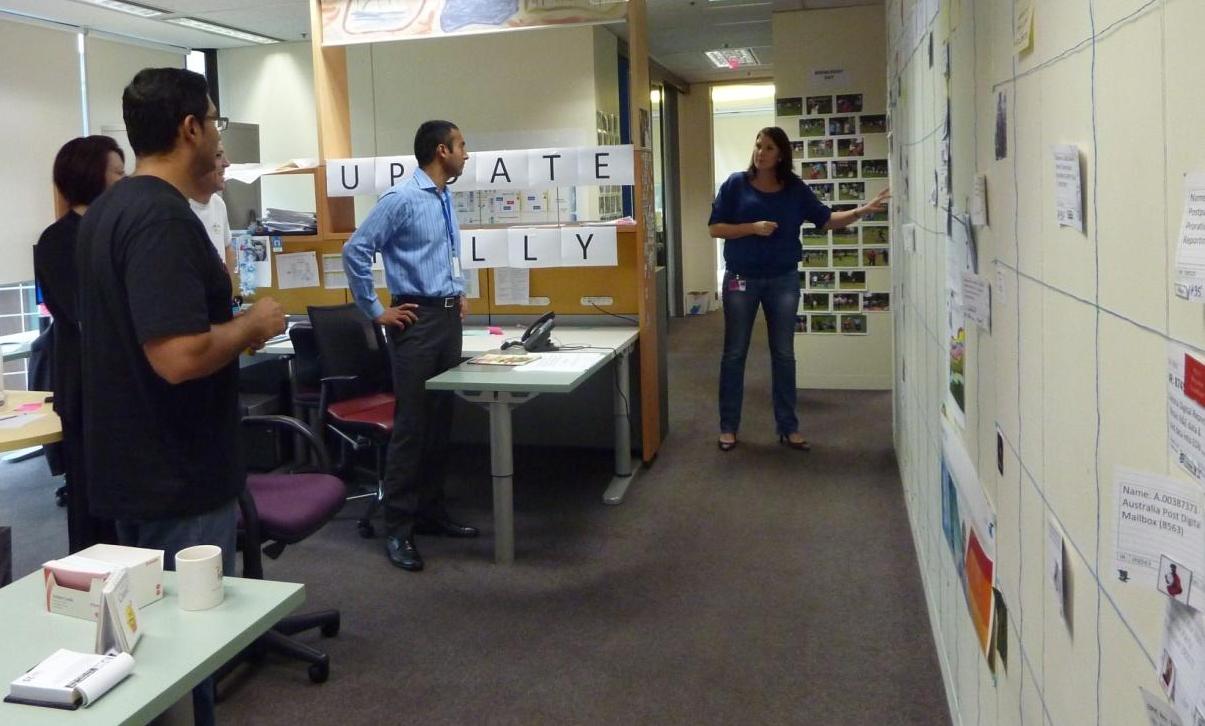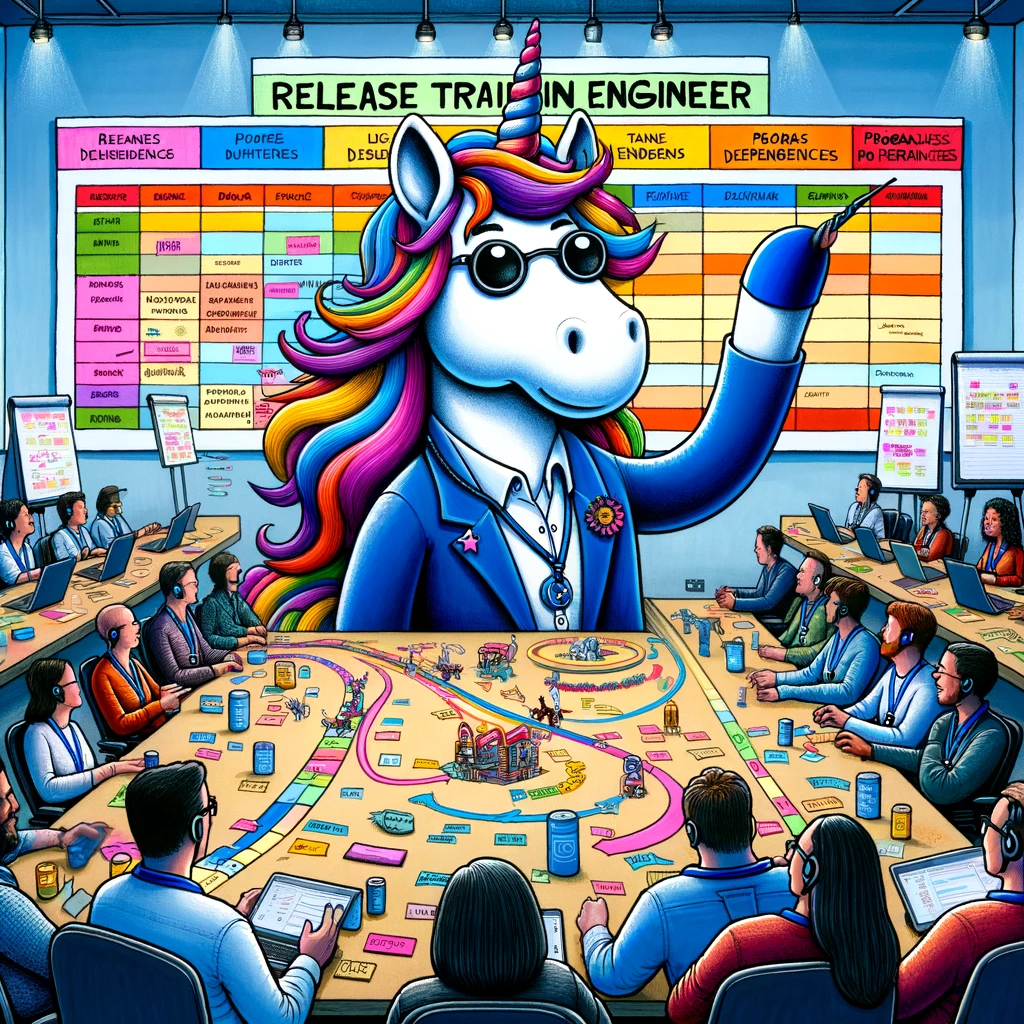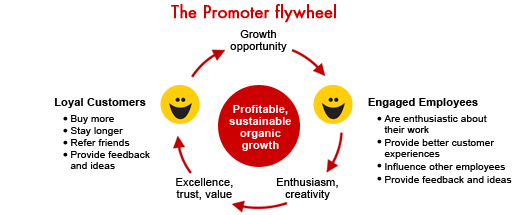- AI-Native Training
- SAFe Training
- Choose a Course
- Public Training Schedule
- SAFe Certifications
- Leading SAFe
- Implementing SAFe
- Advanced SAFe Practice Consultant
- Leading SAFe for Government
- SAFe Lean Portfolio Management
- SAFe Release Train Engineer
- SAFe for Hardware
- SAFe for Architects
- Agile Product Management
- SAFe Scrum Master
- Advanced Scrum Master
- SAFe DevOps
- SAFe Product Owner/Product Manager
- SAFe Agile Software Engineering
- SAFe for Teams
- SAFe Micro-credentials
- Agile HR Training
SAFe in Government - Where are we now?
For over a decade, government agencies have gradually become more open to adopting the Lean-Agile and DevSecOps ways of working described in SAFe. Today, Agile is the preferred technical approach for many public sector and defence software development programs. In fact, we are seeing a rise in SAFe being specified in government Request for Proposals (RFPs). While all of this is good news, challenges remain that prevent government agencies from achieving true mission agility! In this session, Dr. Steve Mayner, VP Framework, Methodologist & SAFe Fellow at Scaled Agile, Inc., provides an update on the state of SAFe in Government and how Scaled Agile, Inc. is joining in the battle to overcome the remaining barriers to true agility!
About the Speaker
Dr. Steve Mayner has a passion for coaching businesses on digital age leadership, organizational change, strategy, continuous learning culture, artificial intelligence, Agile contracts, and SAFe practice in government. His 35-year career in business includes roles as Vice President in multiple Fortune 500 companies and Chief Technology Officer for a Health IT startup. Now in his 7th year at Scaled Agile Inc., Steve serves as Framework VP and senior leadership team member, contributing to strategy formulation, Lean Portfolio Management, and business operations.
Dr. Steve Mayner has a passion for coaching businesses on digital age leadership, organizational change, strategy, continuous learning culture, artificial intelligence, Agile contracts, and SAFe practice in government. His 35-year career in business includes roles as Vice President in multiple Fortune 500 companies and Chief Technology Officer for a Health IT startup. Now in his 7th year at Scaled Agile Inc., Steve serves as Framework VP and senior leadership team member, contributing to strategy formulation, Lean Portfolio Management, and business operations.
SAFe-in-Government-Where-Are-We-Now Download
Transcript
Em Campbell-Pretty: My name is Em Campbell-Pretty, and I'm the founder of Pretty Agile.
We've been running this SAFe for Government meetup for three or four months, primarily with folks that we've met along the way, folks that we've launched trains with, folks who've been in our training room. We thought it would be fun to stay in touch and fun to create connections and share what is going on across the government space.
We have folks here as usual, mainly from the federal and state governments, primarily New South Wales and Victoria and smatterings of folks from other places.
I invited Dr. Steve to come and chat with us this morning because I think of Dr. Steve as “the SAFe in government” guy. He does other things too, but he's the SAFe in government guy. He did a session at the SAFe Summit [2023] in Nashville, which was really interesting, and I wanted to share it with you. Rather than second-hand while trying to do my Dr. Steve impression, I said, "Dr. Steve, would you mind coming in?"
Dr Steve Mayner: You have way too much hair for that.
Em Campbell-Pretty: I do. That was really the problem. I didn't want to shave my head. And so instead, I asked Dr. Steve if he would come and join us.
Dr. Steve & I have known each other a really long time. And I know you've been with the Scaled Agile team a really long time as well, and recently, you got a fancy new title, VP Framework. I'm really curious what that means. I don't know if that's part of your talk. So Dr Steve, VP of the Scaled Agile Framework, Methodologist Team. He is a methodologist, he is a SAFe fellow, and he knows lots of stuff about SAFe in government. I'm going to let Steve share with us the state of play as Scaled Agile sees it at the moment.
I'm going to hand it over to you, Dr Steve.
Dr Steve Mayner: Awesome. Thanks, Em. Thanks for inviting me, and great to see you folks from across the planet. I know it's morning for you, but it's the end of the day for me. That's always just such a weird thing. You're in my tomorrow. So tell me what's going to happen! I don't know.
Em Campbell-Pretty: It's very sunny here. Can't promise about there, I guess. But tomorrow's looking okay, Steve.
Dr Steve Mayner: Awesome. That's great. I'll look forward to it.
As Em said, I'm Dr. Steve Mayner. I'm with Scaled Agile. I've been with Scaled Agile approaching eight years now. So, I was there in the early days. I think I was employee number 28, if I remember correctly. And I worked for a partner very much like Pretty Agile for a few years before joining the company. So, I've been on my SAFe journey since 2013, I believe. My original SPC was [version] 2.5, I think.
I've been doing this just a little bit. And during that time, I did happen to be working in the federal space here in the United States. I had worked in that market since 2003, when I retired from the Air Force, and worked in that space right up until I joined Scaled Agile in 2016.
We'll hopefully share some fun stories and some examples along the way as we go through tonight and describe, "Hey, what's the state of play in the Agile adoption, Agility, Lean-Agile practices, transformation”, that sort of thing.
The Current State of Agile in Government
Now, a full disclaimer upfront. My experience is very much US-centric, not surprisingly. That's where I spent the years. That's where I am; that's where I work. In the time that I've been at Scaled Agile and some of the early things that I did to build our government practice at Scaled Agile, it provided me the opportunity to interact with people who work in the government space in lots of different countries, including Australia. I had folks from Australia in the beta tests of our SAFe for Government class years ago. I've done webinars like these a few times in Australia, but also the Nordics, lots of Europe, so France, Germany, the UK and also folks in India and Singapore. That said, I would not claim to be an expert in any of those countries on the issues in government.
But here's the observation that I took away from that collection of discussions across all those countries. The observation is that while there are absolutely unique aspects to every country's government and the government's journey of adopting Agile, I was amazed at how many times the same common issues were brought up, whether it was around procurement, whether it was around the funding and financing and appropriations process for how government spends money. There's a collection of issues that I found amazingly enough - even though these countries are all different, cultures are different, the laws are different - the same themes kept recurring.
The reason I mentioned that is as I go through and share with you what I have brought to talk about, you're certainly going to see a US theme. I hope what you walk away with at the end is, "Wow. Yes, that took place in the US, but I can see the parallels in our own country, in our own government, in the role that I play in government, or in the government customers that I work with." And maybe there's something of value that you can take back to that context and will help you as you coach internally or externally the journey to Agile inside of government. So, with that disclaimer, let's dive in.

I'm going to start with this excerpt from a book. I know it's a little jarring to have my very first content slide be this wall of text, so I apologise for that, but I think it's incredibly instructive. The book is Recoding America as written by Jennifer Pahlka under the Obama administration. She was the US Deputy Chief Technology Officer and was really a very strong voice at that time. She came from working outside of government into government. She brought that industry experience, and she looked around how government was building their technology-based systems. From the very beginning, she was vocal about the government needing to transform. Government needs to change the way you're doing things, you’re so far behind and not reflective of modern ways that we do these things now: there's a lot that needs to be done.
And this little snippet, I thought, was powerful. It paints a picture that I think every government should aspire to, no matter where it might be in its journey towards Agility. Things like being able to change course quickly, being able to experiment, learn from our mistakes, work collaboratively, user-centred, focused on outcomes, and frequent feedback. These are the staples of an Agile way of working that many of us have held dear for many years. We believe very deeply in these things.
Obviously, it's not always true that it's a common aspiration inside of government, and yet I think it's fantastic that we have people like Jennifer who have worked inside of government who speak from that perspective to say, "Look, government should do this. Government can do this." Of course, if you read the rest of her book, she'll describe her opinions on exactly how they do that. I think that sets the goal.
US Government’s Journey to Agile
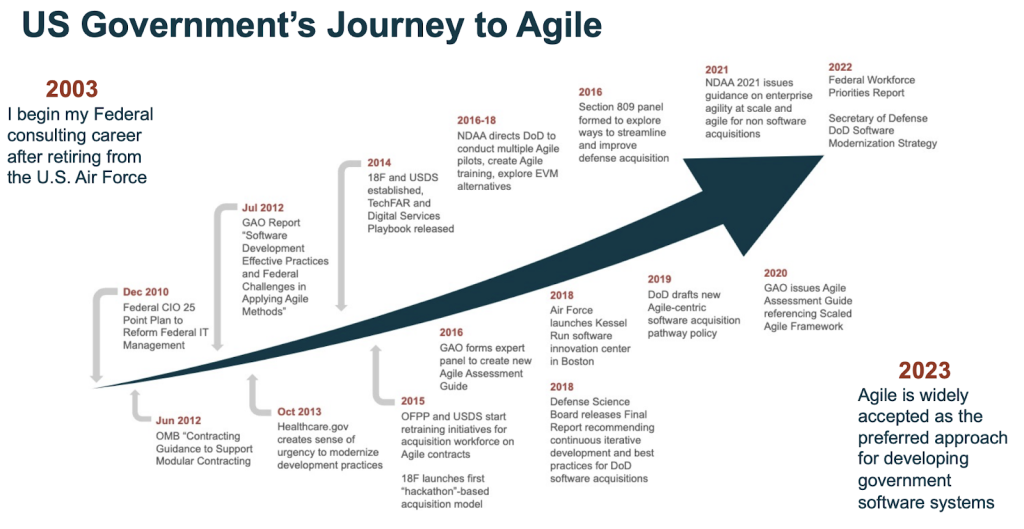
Now, where are we in the process? In 2003, when I retired from the Air Force, I went into the consulting business inside of the DC beltway in technology. And I had already begun my Agile journey. My Agile journey began in the mid-1990s. I was a project manager, and I was PMP-certified. I would go to seminars around project management, and I attended one where there was an author who had written a book called Extreme Project Management. Now, obviously, there's a play on Agile concepts, but he was trying to make it relevant to project managers. I read that book, and it just was life-changing because, from that point on, I wanted to learn more. I was consuming everything I could get my hands on about this different way of organising and executing work.
I dive into federal IT space in 2003, and of course, I'm immediately wanting to bring this great insight, these aha's, to the federal government. It's like, "Oh, if anybody could use this, the government could use this. We all want our government to be as efficient and effective as possible." Well, you'll notice from the timeline from 2003 to 2010 was the valley of despair because for seven years, every time I would bring this up, I was laughed at. I was completely dismissed. "That Agile, that's hippie stuff. That doesn't belong in government. Go away. Just give us your integrated master schedule and your Gantt chart, and shut up."
I didn't feel like there was a lot of hope. And then in 2010, this document was produced. We had a federal CIO, one of the first federal CIOs in US history, that started to talk about these transformational things that needed to take place in government. And while they didn't use the words Agile or Scrum or any of those things that we know, it was very clear when you read that, that this person saw the future of government as one where Agility as we know it needed to be the norm, needed to be the way things got done. I can remember to this day when I got my hands on it, I was so excited, I started going to my customers and saying, "See? Yes, the government's saying you need to do this."
Now, of course, they didn't immediately jump on the bandwagon by any means. And what took place over the course of, as you can see, here we are in 2023 over what, it took another 13 years as this began to slowly unfold with one puzzle piece after another falling into place. Some of it was just different agencies waking up and responding to the federal CIO. Some of it was crisis. And I think that's an instructive thing for us to remember. Going back to the Obama era and the creation of healthcare.gov, this was the president's big thing, the big mark on history he was going to make. And the website came up, and it crashed and it was a disaster. And there was egg on the president's face.
A lot of things happened after that. He went to the best of industry in Silicon Valley, literally put them on a plane and flew them directly into DC to try to fix the problem. And there are a lot of things, from the creation of new agencies, 18F and USDS, and projects and programs like Kessel Run in the Air Force, that really started to accelerate the acknowledgement inside of government that government needed to change.
Now here we are, 2023, and I can now look back with that perspective to 20 years ago when I began this process of advocating for this inside of government that, you know what? I can honestly say, at least here in the US, that when it comes to software systems inside of government, it's pretty well agreed to, at least in a general sense, that Agile is the preferred approach. And increasingly, we are seeing specifically that SAFe is the preferred approach, which we're very grateful for.
There's a lot of reasons for that, but we're literally seeing that wording appear in the request for proposals for government contracts that are hitting the streets. So that's super exciting. A lot of work is still ahead of us, but the journey that we've taken to get to this point over 20 years, for me, is personally gratifying. I know it is also for so many others who've worked diligently in this space for many years.
Government Challenges with Agile Transformation
That being said, I think we all know that it's not all "roses and rainbows". Even as far as we've come, there are still challenges. I'm sure you're experiencing it in your space, and as I connect with different people in this space as well, there's still challenges. But there's a shift, and it's a really important shift. Maybe you can relate to this. We can chat at the end here and see if it's true there as well as it is here.
Here are the challenges we hear today when we ask, "How's your transformation going? How's Agility? Are you able to do those things that were on that Jennifer Pahlka slide that I started with?" And when they say that they're still not there yet, and we ask them why, like, "What's the challenge? What's the barrier?" There was a time where the answer to that question was, "Well, we don't believe in Agile. Agile will never work in government," those types of answers. We're really not hearing that much anymore. That's been put to bed. That argument has been won.
Here are the things we hear now, things like organisational culture and mindset. Wow. Now, that one's going to be a little tougher to tackle. Things like budgeting and funding models. I know we still struggle here in the US where the way we fund government, the way dollars flow into individual agencies and programs and all of the rules that come with that money and how their hands get tied for how different things can be used really creates a problem in achieving Agility and being able to pivot and build the right thing and move quickly. That's a challenge.
Procurement and contracting it's the bane of everybody's existence. No matter where in the world I've talked, contracting always comes up as we are asking our people and our suppliers to work in an Agile way, but we're working with contracts that reinforce the old way of working. How do we solve that? Because at the end of the day, especially with our suppliers, they're going to do what the contract says because otherwise, they get bounced from the contract. They don't get paid. So they're going to defer to the contract. It's a real problem, and it's still not completely solved yet. I see the heads nod, so hopefully, this is a little therapy for the attendees as well.
Governance and regulation is still an issue. There are still places where regulations and even laws, laws on the books, create barriers to really enabling the way of working that we would love for our agencies to work. That's a challenge. Talent and skill gaps: we see issues of government not having all the skills that they need, especially for rapidly evolving technologies like AI. But we also see that, particularly in the government job description catalogue, you just don't find a lot of Agile job descriptions. Go into the catalogue and see if you can find Scrum Master anywhere or Release Train Engineer anywhere. It's not there. You've got people like Software Engineer III is actually working as a Product Owner. Well, that may have worked temporarily, but eventually, people get concerned about, "Well, what's that doing to my career path? How do I jump from this job that I'm doing? And the next job's going to ask me what I was doing as a software engineer III, and no, I was a Product Owner." See the problem?
What's interesting about this and I just actually look at this list for a moment and think, "What do all of these things have in common?" What stood out to me when I first put this list together, and actually our strategic advisor in our federal practice, Cynthia, put this together and I looked at it and said, "You know what's amazing about this? Nowhere in this list do you see there's a challenge over how to properly write user stories or how to do story pointing or how long should our iterations be?" You don't see any of that. There's no debate about those things anymore. Yes, different groups may prefer different practice models for sure, but that's not really where their focus is. The focus has shifted, and it's a very important shift.
The Shift Left is Beginning to Happen
In fact, in the talk that Em referred to, we talked about the fact that there's a shift left happening. And what I mean by that is the remaining issues that impair Agility are happening to the left – they're happening before the work actually gets to the people who are building the systems.
It's the precursors. It's the policy. It's the funding. It's the contracting. It's the regulations. It's the budgeting process. Long before work ever lands at an Agile team, there are all of those factors that are going to impact whether or not they can truly achieve Agility. And that's the frontier we're at right now. Those are the challenges that we're facing.
Government needs Agility to drive high performance
Government needs Agility to drive high performance, but they've got to refocus where the transformation is happening in order to solve the most immediate problems. And you're starting to see that. There's a quote here from the Federal Workforce Priorities Report as an example.
As agencies respond to the impact of the rapid pace of technological change, it is imperative they have an agile and adaptive workforce ready to meet the challenges of current and future missions.
2022 Federal Workforce Priorities Report
These are from government documents where the government itself is recognising it's imperative that agencies have an Agile and adaptive workforce ready to meet the challenge of the future mission. This is the pattern that we're seeing.
They're not there yet. The problems haven't all been solved yet, but we are seeing that this conversation is starting to happen more frequently, and not just among the Agile change agents. We are seeing this from government bureaucrats, from the people inside these agencies, from the government accounting office and all those various three-digit agencies.
And so, I'm going to briefly share some examples that illustrate that this shift is starting to take place. This is just one example. There's proposed legislation that would actually change law called the AGILE Procurement Act of 2022 here in the US that would address some of the really difficult pieces of law that we have here in the US that are preventing agencies from actually contracting for services that they need in their technology programs and contracting in a way that would allow them to write into the contract the ways of working of Lean and Agile and DevOps.
I remember that years ago, there was an Air Force general, four-star general, and in the SAFe for Government class, we used to play the video or snippet of the video or at least put a link to the video. And she's speaking to a group. It was right before she retired and she was talking about the need for all these things, like Jennifer did. And she listed, "This is what the government needs to do." And there was a variety of people in this audience, and apparently there were some legislators in the audience as well. Because I remember at a point in the video toward the end, as she's listing these last issues where she stops speaking to the general audience and she turns and she looks at the legislators, and she says, "That's where you have to take action because there are some of [the[ things that we can do in our agencies, but there are some things only you can change. And you've got to act. You've got to put new laws on the books. You've got to lower these barriers because our hands are tied."
Now we are finally starting to see take place. We're seeing laws being proposed and running through Congress, whether it's this Act, whether it's in the Defence Appropriations Bills coming through, where laws are being changed to address some of the shift-left issues that remain to achieving Agility.
Just a couple more examples here. Planning, Programming, Budgeting and Execution, what a wonderful mouthful of government alphabet soup. This goes beyond the contracting. Before you can actually issue a contract in government, there's a whole bunch of things that have to happen before that. There's a planning process where you've got your three years and, your five years, and your 10-year plan. So there's a planning process. There's programming (not computer programming) actually building the programs out that are going to do certain things inside of government. There's the budgeting process where agencies put their requests up to Congress, and Congress shifts through them all, and they hopefully get an actual budget out, which, here in the US, sadly, we haven't done in the last 27 years. We've lived for 27 years off continuing resolutions. But there is a budgeting process, albeit not a great one, where the legislature authorises the money that agencies can spend and then the governance around how they execute.
You’ve heard the term 'colour of money'. We talk about that in the SAFe for Government class. It's the rules assigned to money that restrict how agencies can use it, and that restriction can impair Agility. This is an actual reform initiative inside of government to dramatically change how all these processes work so that federal agencies can operate in a modern digital age Agile process compared to what we've done in the past.
Here's another one. Our Homeland Security and Governmental Affairs, Legacy IT Reduction Act. Sometimes, these are policies. Sometimes, this is also technology. We have massive amounts of tech debt across our government. We see that in companies for sure, too. Government is just behind the modernisation curve. And so now we are seeing agencies and even the federal government passing laws passing regulations. This is another legal bill: a bill that would change the law, driving this inside of this agency to accelerate the modernisation of their technology.
Just a couple more, and then we'll move on. The DoD Software Reform initiative and strategy in the US government: I don't know if this is true in all governments, but the Department of Defence represents such a large percentage of the total overall government that anytime the Department of Defence moves, it has ripple effects across all the rest of government. So we watch very closely to what DoD is doing, and we've seen some pretty dramatic changes. They have absolutely adopted an Agile way of working when it comes to their software and their software modernisation strategy, and those Agile ways of working are now deeply embedded. So that's pretty exciting.
And then the last example, which I'm pretty jazzed about because I was actually a part of building this. This was one of the last things that I did when I was really focused on government work, and that is the agency that audits government programs in the US, the GAO (Government Accountability Office). They were discovering that agencies were starting to use Agile, and their auditors didn't know how to audit those programs. They didn't understand the language. They would ask for their Gantt chart, and they would say, "Oh, we don't do Gantt charts, but we have a backlog, and we have a roadmap, and we can show you this, and we can show you that." And the auditors were like, "You're speaking a foreign language. I don't even know what to do with my instruction book here."
And so the GAO decided, "Agile's a thing now, and we need to equip our auditors to know how to audit such a program, but we don't know the first thing about Agile." So, they assembled a group of experts both from inside of government and outside of government. I was honoured to be invited to that group there from the very first meeting. And I, along with a lot of other like-minded people, worked for five years to build this (Agile Assessment Guide), which is now out. It serves as the blueprint. It literally is the answer to the test. Any government program that's using Agile knows exactly what they're going to be evaluated on what GAO is going to look at. All they have to do is open the guide, and they've got the answers to the test. So we wanted to make sure that it was sound. It's good stuff, and we're super excited to have contributed to that.
Fast run through some of the current things that are happening right now. Let me shift gears a little bit and talk about how SAFe is helping. And you probably picked up on a couple of things already, but I'll talk about a few more.
SAFe 6.0 and Government
For the last several versions, this was, again, one of the things I was really honoured and pleased that Dean asked me several years ago to do a couple of things. One was to develop a training course specifically for government, which we did. I'll talk a little bit more about that in a minute. But also to actually add into the framework guidance specifically dedicated for and aimed at people who are trying to implement SAFe inside of government. Now, we find that just by tracking the clicks that, people probably still, even inside the government space, are not truly aware of what's back there. There's a lot of good stuff, both things that we wrote as well as links to tons of resources from all different places that are helpful for when you're trying to implement Agile and SAFe, specifically inside the federal space. So, definitely check into that. Our federal team is constantly working to update and make it more relevant, make it more useful. So definitely check that out if you didn't know that was there.
I can remember being at ground zero for the adoption of SAFe in government. And I debate this from time to time in terms of who was actually first. But as far as we know, I can go all the way back to 2013 because we were part of the very first official SAFe program that SAFe was proposed as the technical approach, and we won the award, and also the first federal IT integrator that became a SAFe gold partner. So we were number one, the very first one. We are so excited now that we have over a hundred partners that work inside the government space. They're representing over 800 different agencies, states, countries where government practitioners are using SAFe.
We've also just counted up where people came from: we're approaching over 100,000 people (government and contractors) that have taken SAFe training. So excited about that. I was a team of one back in the day when I first joined Scaled Agile, and now we have an entire government-focused team that spends all day every day focusing specifically on the government space and how we can best serve those who work in government in their practice of SAFe across the world. Very exciting.
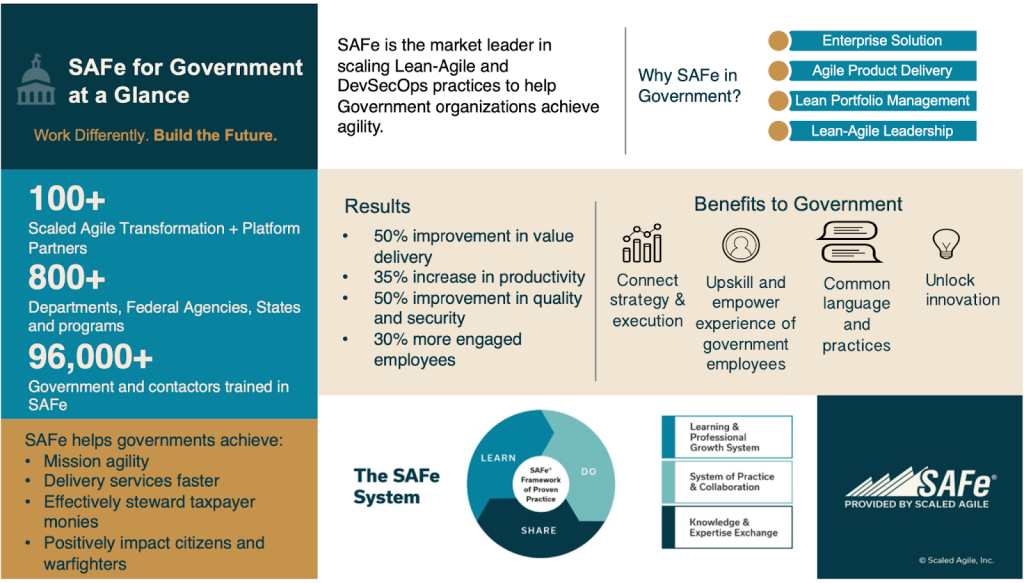
Leadership Embracing Digital Transformation with SAFe
Another exciting thing I mentioned earlier, and I can't remember if it was in the webinar or when I was chatting with Em beforehand, but for years, one of the problems was even if you had a great success story inside of a government agency, you couldn't get them to talk about it because they were afraid. And then they would get the microscope, get the scrutiny. But now, we are seeing not only are agencies adopting SAFe but they're willing to talk about it. They're willing to come to our [SAFe] Summits and tell their story. They're willing to publish case studies, so it's a matter of record.
And that's super exciting. We've had them on our main stage. We've had them in our tech breakouts. And there's some true pioneers and some truly courageous leaders inside these agencies that are willing to share their stories. So that's super exciting.
White House Federal Workforce Priorities Report
We're able now as a company to do some things with our presence in the market that maybe we wouldn't have been able to do when I first joined the company almost eight years ago. But because SAFe has become such a globally recognised leader in how to practise Lean-Agile DevOps at scale, that we are now able to do some things we weren't able to do before.
For instance, I mentioned earlier the Federal Workforce Priorities Report. We were able to build this infographic really connecting how SAFe and SAFe practises directly connect and tie to virtually every element of that Workforce Priorities Report that the government said, "This is what we need to do." We said, "Well, good news. SAFe can help you with every single one of the, and here is how." And we use that to start opening doors and making connections, and people are like, "Wow, there's published practice for how we can achieve the thing that was more aspirational in our minds, but there's actual practical guidance on how agencies can do that." So that was great.
SAI is advocating directly with US government
And from there, we started working with an organisation called Imperium. They're a consulting firm. You can call them a lobbyist, but what they have been able to do is give us access. Nothing nefarious. Literally just giving us the ability to connect with staffers and sometimes with congressmen and senators on the Hill that are on committees working on issues directly related to Agile ways of working. And we've been able to have those conversations. We've been able to talk about what's going on in industry, what the state of best practice is, and how government can embrace those things and get better at achieving mission Agility inside the government space. And there's just some examples on the screen of some of the committees and subcommittees and briefings that we've been able to do and are continuing to do as we speak.
SAI White Paper on Agile Roles in Government
One of the more recent things that we've been working on, as I mentioned earlier, when you think about different job descriptions inside of the government and how very non-Agile they are, it's a real problem. Well, we decided to lean into that, and we published a white paper describing the challenge and in proposing very specific roles that we believe that government should add to their job catalogue so that people aren't in these weird situations where they're performing an Agile role but their government job description says something completely different. This has been very well received and we've got legislators who are really leaning into it, wanting to know more, wanting to understand more.
And we've really only been working on this since April, so we're just really excited. We think this could be a true value add in our government space and maybe be as impactful as what PMI did with the PMP certification years and years and years ago when they got a project manager into that catalogue. And, of course, we've seen where that went. So we're very hopeful that we'll truly be able to make a difference inside of our government space on this particular problem.
Just a quick list of some other things that we're working on. I'll just bounce right through that and land this plane so I can answer some questions.
The SAFe RFI/RFP Exemplar
You may or may not be aware that we worked with a group of people inside the federal space, certainly inside of our company, but also in the community, directly addressing that challenge of not having Agile contracts. Well, Agile contracts start with RFPs, RFIs coming from government to industry, describing the services that they're going to contract for. We got a consortium of people together and wrote an exemplar, RFP, an example that they could take that had all the different sections that our RFPs require in the US and sample language that they can literally cut and paste and use to help build their RFPs that they're putting out on the street for their contracts.
So if that's something you weren't aware of and you're interested in, there's a link there.
SAFe Day Governments
Other things we are doing, we did SAFe Day Governments before COVID. We did two or three of them. And, of course, COVID shut that down. And we reinvigorated those, got them out of the virtual world, got them into in-person world back in April in DC, [they were] incredibly successful. It was actually at that event where we met with some high-level government folks, some from the Executive Office of the White House, and proposed this next challenge of the job descriptions. And she absolutely agreed. She said, "Yes, we need to tackle that." Got us connected to the right people to start talking to over in our Office of Personnel Management, and we're on the brink of maybe actually making a difference. So that's really exciting and we'll continue to do these next year and the years to come as well.
New SAFe for Government Learning Modules
One final note then I'll take questions. We are now doing something that is probably overdue, but again, because of COVID and a lot of things, it just delayed us getting to it. The SAFe for Government class that I helped create and get out into the market, it's done its job. Originally, it was designed to try to make it clear to people inside of government that Agile and SAFe could actually work in the government space. As I mentioned earlier, that's really not the challenge we have anymore. And so it really no longer fits the need.
And so what's happening is we're actually, we're going to sunset the course as it currently exists, but we are replacing it with an entire series of micro-learnings so we can go deeper into issues like government roles and responsibilities and contracts and the kinds of things that I mentioned throughout this presentation. So we can go much deeper than the current course does. A lot of the current course had big pieces of Leading SAFe. There's no need to duplicate that inside of these micro-learnings. Leading SAFe works great, just as Leading SAFe. This will be 100% focused on the government issues with adopting SAFe, adopting Lean-Agile practices, and how you can overcome those challenges.
That work is happening right now. The very first of those modules is very close to being tested, and I think it actually ran an alpha test last week. So very excited to continue to try to add value to those working with governments around the world with that. And they do, by the way, are taking a much more international, as general as we can. We can't represent 184 different countries, obviously, but trying to make sure that it's not very narrowly focused on just a US lens.
So with that, very close, almost hit my mark, Em. I'm disappointed. I'm a minute over my target!



